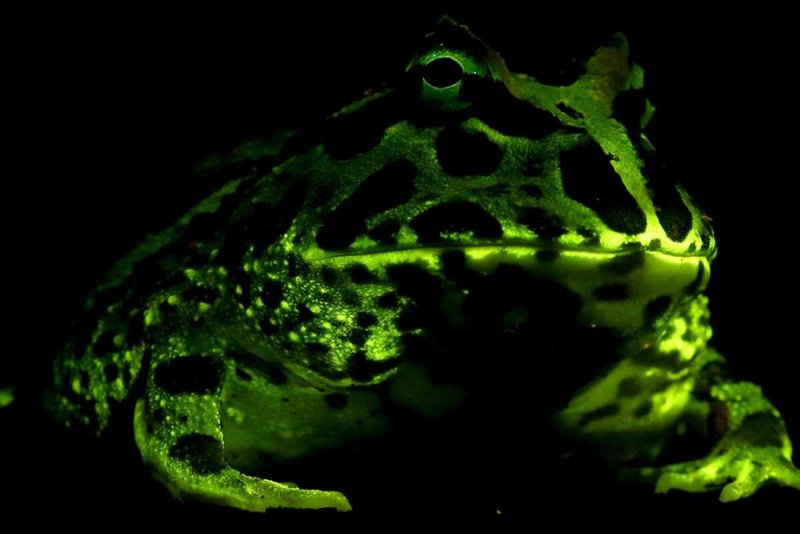By Brooks Hays

In a newly published study, scientists reported biofluorescence in 32 amphibian species, including Cranwell's horned frog. Photo by St. Cloud State University
Feb. 27 (UPI) -- Until now, scientists knew of only four biofluorescent amphibians, one salamander and three frog species. According to a new study, published this week in the journal Scientific Reports, biofluorescence appears to be fairly common among amphibians.
For the study, Jennifer Lamb and Matthew Davis, biologists at St. Cloud State University in Minnesota, exposed a handful of specimens from 32 different amphibian species to ultra-violet light. Researchers used a spectrometer to measure the wavelengths of the light emitted by the amphibians.
All of the tested species proved to be biofluorescent, but each species boasted remarkably distinct patterns of fluorescence. Some featured a few splotches, while others boasted fluorescent bones. Some specimens had fluorescent patterns across their entire body.
The eyes of amphibians feature rod cells capable of detecting green and blue light. Biofluorescent patterns may help amphibians locate one another in low-light environs.
RELATED Flying radically transformed gut microbiomes of bats, birds
It's possible the feature could do the opposite, as well, helping frogs and salamanders blend in and camouflage themselves under certain light conditions.

According to the study, the fluorescence observed in the amphibians could have a variety of causes. It's possible many amphibians rely on fluorescent pigments in their dermal cells. Some species likely utilize fluorescent proteins. Previous studies have found tree frogs fluoresce by exuding biofluorescent, mucous-like secretions.
"For other vertebrates, ossified elements immediately beneath the skin are responsible for biofluorescent patterns ... under ultra-violet excitation," researchers wrote in their paper. "Here we found that the bones in the digits of the marbled salamander fluoresced in response to blue light."
The new study suggests that ancestors of modern amphibians likely also featured biofluorescence, which would explain the phenomenon being widespread among frogs and salamanders living today.
Scientists hope their discovery will inspire further investigation of the source and purpose of biofluorescence among specific amphibian species.
"Our results provide a roadmap for future studies on the characterization of molecular mechanisms of biofluorescence in amphibians, as well as directions for investigations into the potential impact of biofluorescence on the visual ecology and behavior of biofluorescent amphibians," scientists wrote.
No comments:
Post a Comment